Refer to the exhibit, which contains partial output from an IKE real-time debug.

Based on the debug output, which phase 1 setting is enabled in the configuration of this VPN?
Refer to the exhibit, which shows a session entry. Which statement about this session is true?
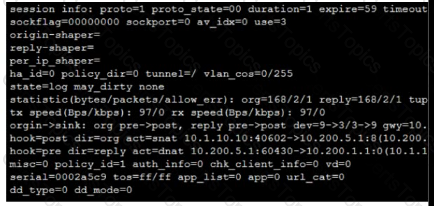
View the exhibit, which contains a partial routing table, and then answer the question below.
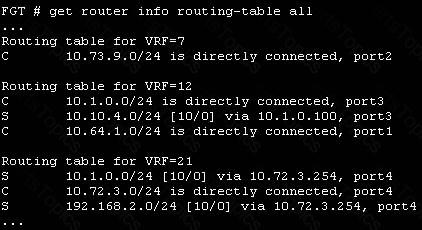
Assuming all the appropriate firewall policies are configured, which of the following pings will FortiGate route? (Choose two.)
Refer to the exhibit, which shows the output of a BGP debug command.

What can be concluded about the router in this scenario?
Refer to the exhibit, which contains partial output from an IKE real-time debug.
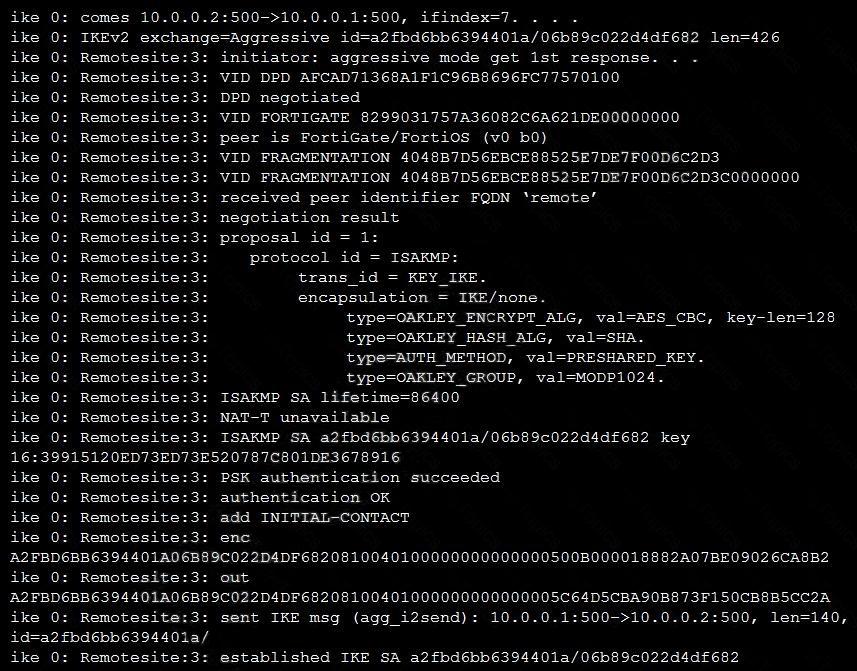
Which two statements about this debug output are correct? (Choose two.)
View the exhibit, which contains the output of a BGP debug command, and then answer the question below.
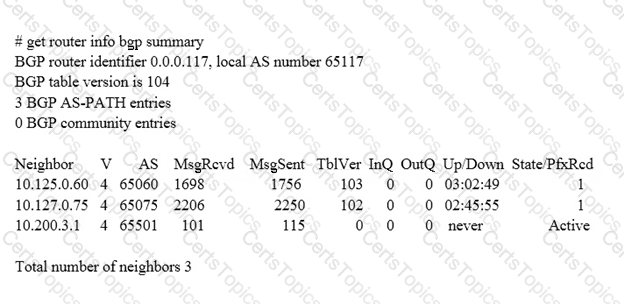
Which of the following statements about the exhibit are true? (Choose two.)
View the following FortiGate configuration.
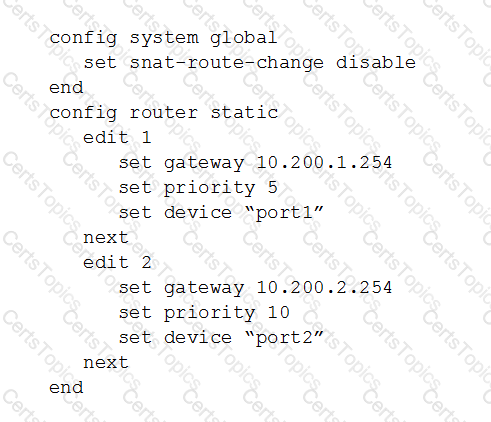
All traffic to the Internet currently egresses from port1. The exhibit shows partial session information for Internet traffic from a user on the internal network:
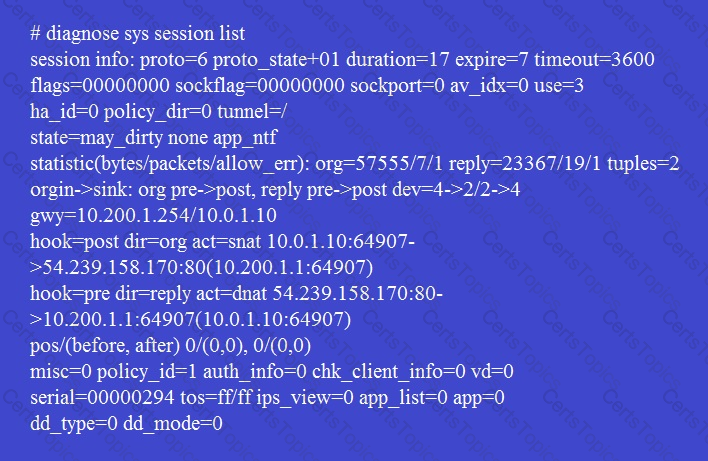
If the priority on route ID 1 were changed from 5 to 20, what would happen to traffic matching that user’s session?
What is the purpose of an internal segmentation firewall (ISFW)?
A FortiGate is configured as an explicit web proxy. Clients using this web proxy are reposting DNS errors when accessing any website. The administrator executes the following debug commands and observes that the n-dns-timeout counter is increasing:

What should the administrator check to fix the problem?
Which of the following statements is true regarding a FortiGate configured as an explicit web proxy?
Refer to the exhibit, which shows a central management configuration.
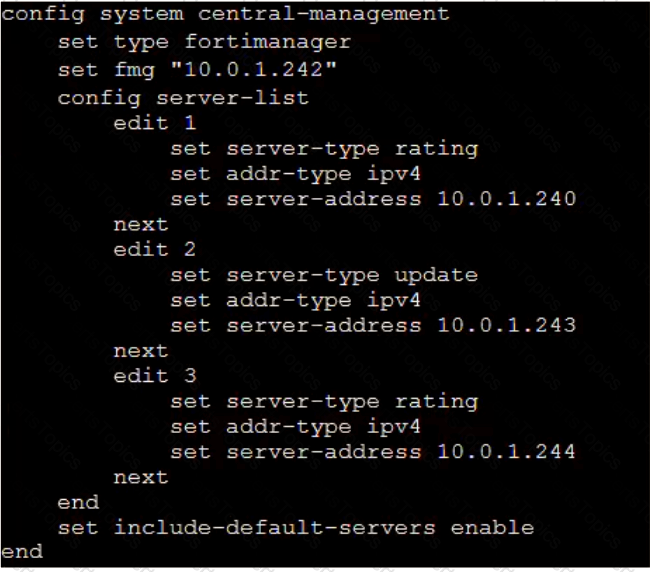
Which server will FortiGate choose for web filter rating requests, if 10.0.1.240 is experiencing an outage?
View the exhibit, which contains a partial web filter profile configuration, and then answer the question below.
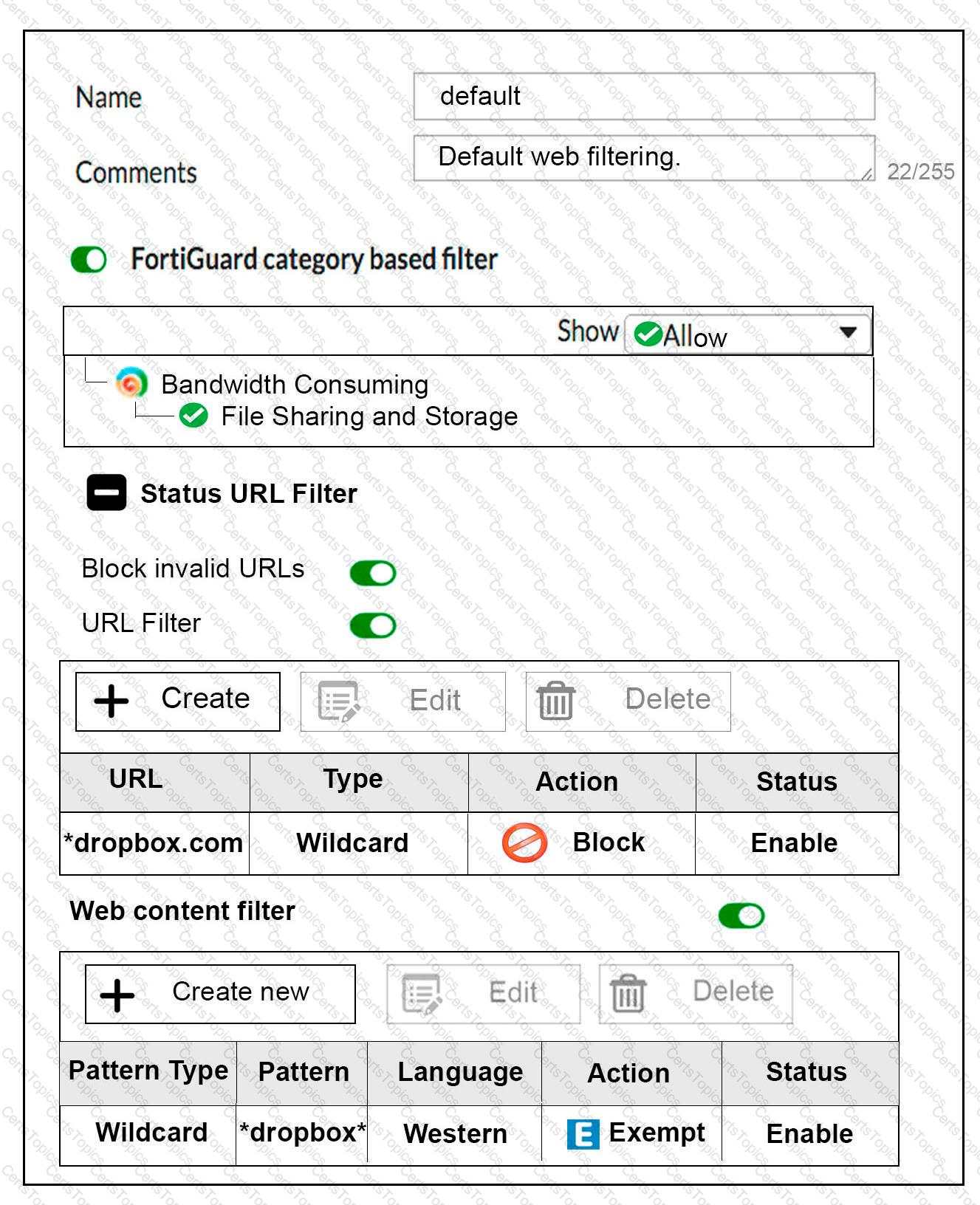
Which action will FortiGate take if a user attempts to access which is categorized as File Sharing and Storage?
Which statement about memory conserve mode is true?
You have configured FortiManager as a local FDS to provide FortiGate AV and IPS updates, but FortiGate devices are not receiving updates to their AV signature databases, IPS engines, or IPS signature databases.
Which two settings need to be verified for these features to function? (Choose two.)
An administrator has configured a FortiGate device with two VDOMs: root and internal. The administrator has also created and inter-VDOM link that connects both VDOMs. The objective is to have each VDOM advertise some routes to the other VDOM via OSPF through the inter-VDOM link. What OSPF configuration settings must match in both VDOMs to have the OSPF adjacency successfully forming? (Choose three.)
Which the following events can trigger the election of a new primary unit in a HA cluster? (Choose two.)
View the exhibit, which contains a partial output of an IKE real-time debug, and then answer the question below.
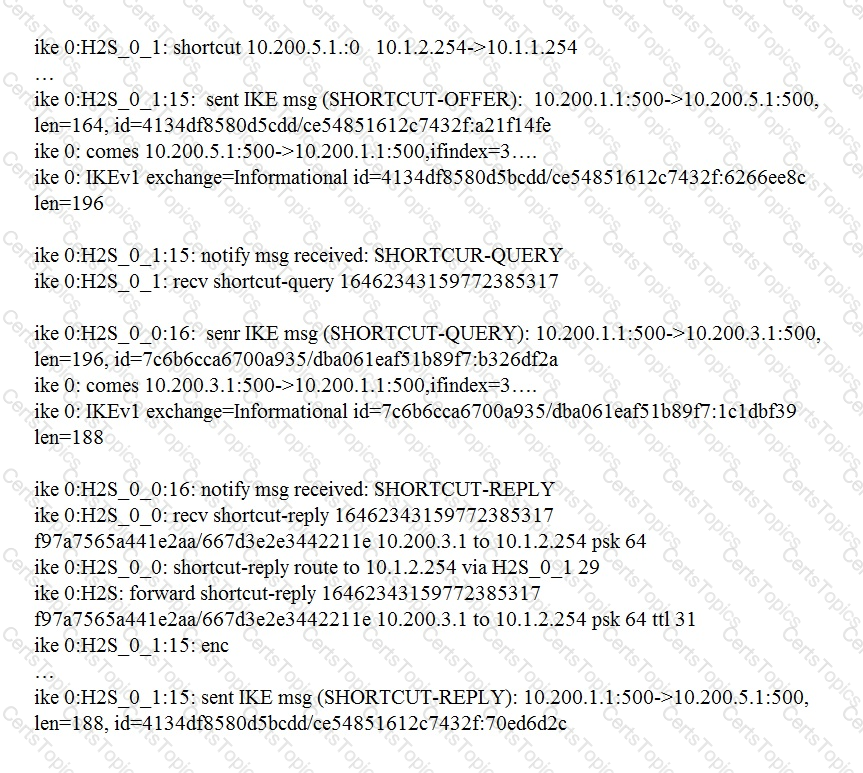
Based on the debug output, which phase-1 setting is enabled in the configuration of this VPN?
Which two configuration settings change the behavior for content-inspected traffic while FortiGate is in conserve mode? (Choose two.)
View the exhibit, which contains the output of a real-time debug, Which statement about this output is true?

Which of the following statements is true regarding this output?
How does FortiManager handle FortiGuard requests from FortiGate devices, when it is configured as a local FDS?
Examine the following partial output from two system debug commands; then answer the question below.
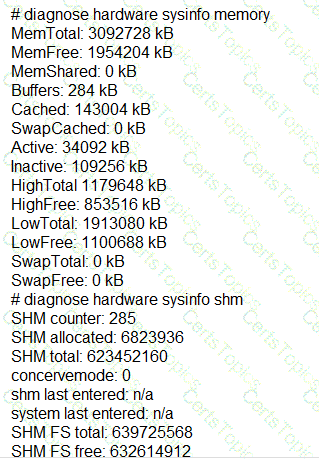

Which of the following statements are true regarding the above outputs? (Choose two.)
View the exhibit, which contains the partial output of a diagnose command, and then answer the question below.
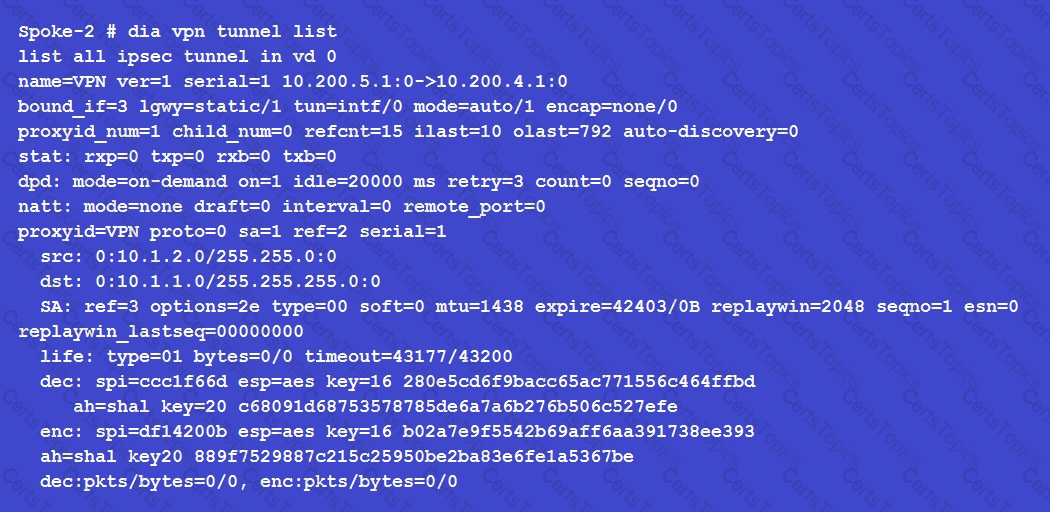
Based on the output, which of the following statements is correct?
An administrator has configured two FortiGate devices for an HA cluster. While testing the HA failover, the administrator noticed that some of the switches in the network continue to send traffic to the former primary unit. The administrator decides to enable the setting link-failed-signal to fix the problem. Which statement is correct regarding this command?
How are bulk configuration changes made using FortiManager CLI scripts? (Choose two.)